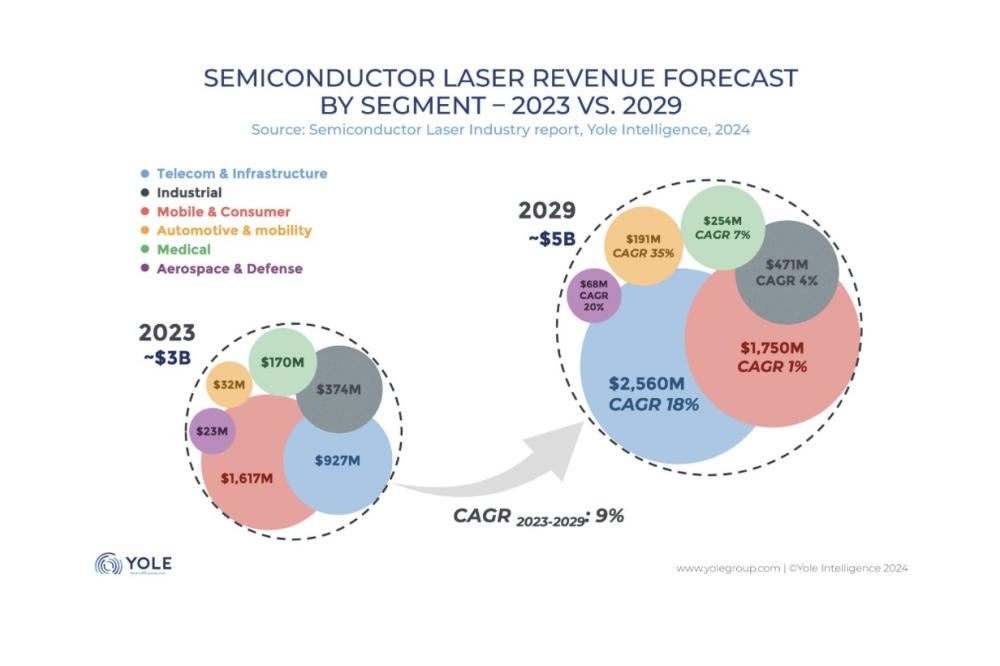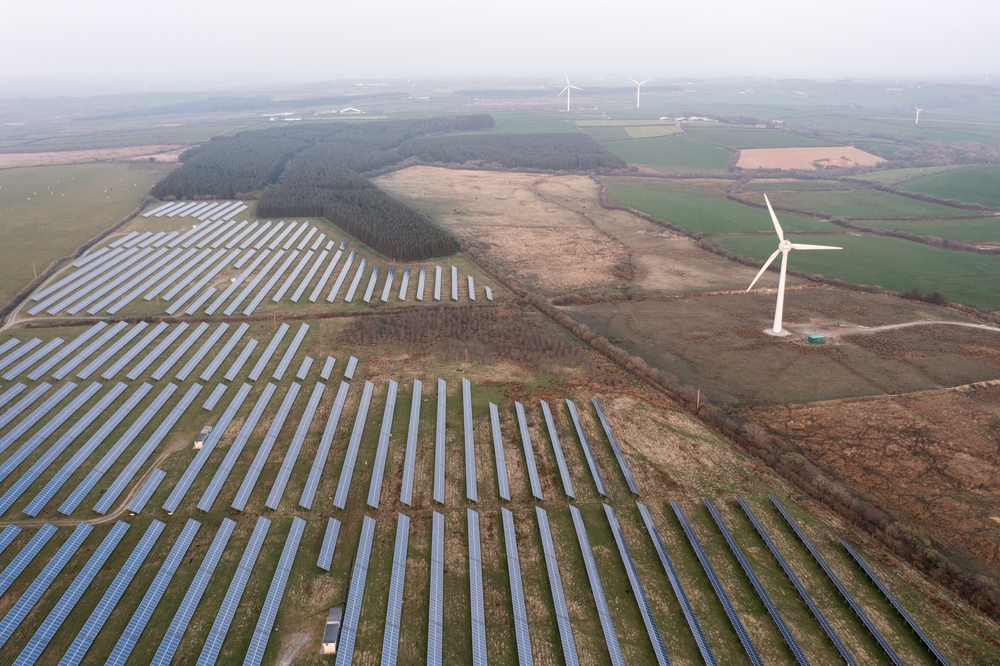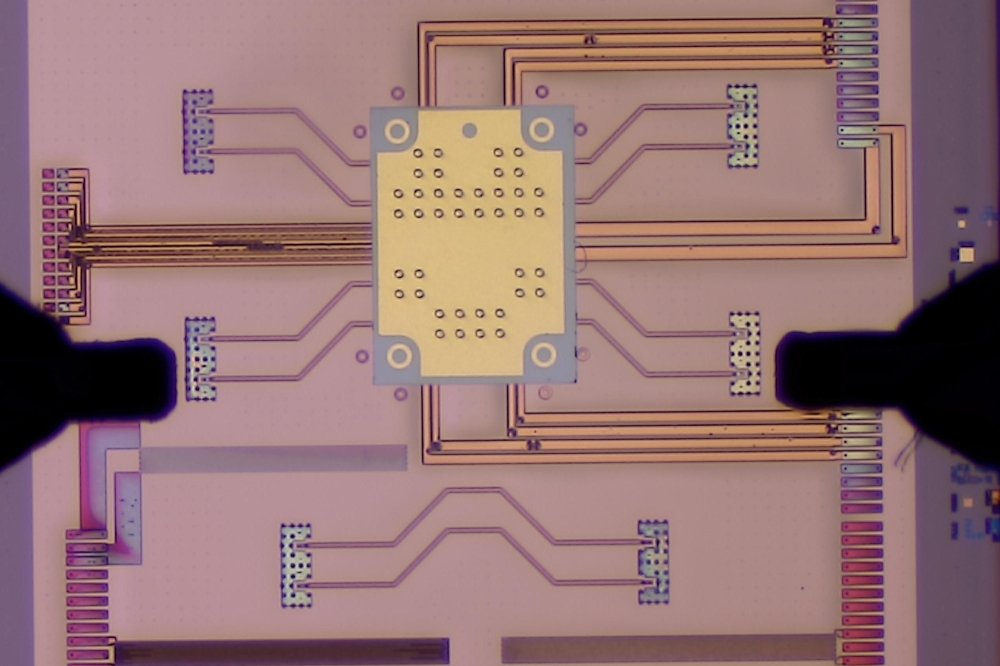Nitride LED makers strive to enhance efficiency and power
The requirements placed on devices used in indicator or signaling applications and in illumination are very different. Several manufacturers are looking at larger area chips to house higher drive currents and outputs for illumination, while others leverage what geometrical tricks are available to squeeze more of the original photons from standard-sized chips, which do not require packages with thermal management. This is largely dictated by which markets are being targeted, and some of the different approaches being employed for nitride-based LEDs are described below.
Cree pushes standard 5 mm LEDs Cree s early generations of GaN-on-SiC devices consisted of relatively low-brightness chips. However, over the last three years and in particular the last 12 months, the company has increased the brightness of its standard 5 mm LEDs by a factor of three. Cree s latest commercial product, the X-Bright, is a series of new blue and UV InGaN-on-SiC LEDs, which offer up to a 50% brightness increase over its previous MegaBright chips. The new devices use geometric shaping to reduce losses due to total internal reflection, as well as flip-chip mounting to increase light extraction in the forward direction (see Compound Semiconductor December 2001, p9). The die have a p-n junction area of 0.25 x 0.25 mm2.
Blue devices have a radiant flux of 16 mW at 20 mA, obtained at a forward voltage of 3.7 V (see figure 1). Cree believes these new LEDs are the brightest standard 5 mm devices on the market. The company s earlier generation 505 nm green device, which is not flip-chip mounted, provides 8 mW under the same conditions and targets traffic signals and signs. While Cree has demonstrated 21 mW UV LEDs at an efficiency of 32%, its X-Bright 395 and 405 nm UV chips will target an external quantum efficiency (i.e. the efficiency of photon extraction from an unpackaged LED die) of 25% in production.
While larger die can provide more light, this is at the expense of efficiency. "The choice really depends on the application," says Cree s president and CEO Chuck Swoboda. "Other companies have been doing excellent work with packages and high-power chips, which are designed for high-output illumination applications, where large light output is more important than small size and efficiency." For many applications, including automotive stoplights, the light still needs to be distributed over a large area. "This is more efficiently achieved using many smaller devices," says Swoboda.
However, for certain applications Cree s customers would like to produce high-power light sources. "These are cases where it s not purely about efficiency, but also about having enough power to generate the most light in the smallest space," says Swoboda. "In those applications the power chip is probably a viable alternative, and we would like to support such requirements."
Uniroyal improves blue and UV Uniroyal is also driving up the output power of its blue and near-UV LEDs, and it is targeting white-light emitter applications. Operating at 460 nm, Uniroyal s blue LED chips have a radiant flux of 3.4 mW (using a forward voltage of 3.61 V and 20 mA drive current), measured by simply mounting the die on a header without any additional heat sinking. According to senior device scientist Mary Crawford, the output of the device more than doubles when packaged; it is currently rated at 7.5 mW, and around 15 lm/W. The external quantum efficiency is 13.6% and the wall-plug efficiency is 10%; although 15 mW can be extracted at 50 mA, Crawford says the emitter suffers from a blue shift of around 3 nm.
The company is also developing shorter wavelength devices down to around 385 nm. Uniroyal s 405 nm device offers 2.4 mW in chip form and up to 5.3 mW of radiant power when packaged (measured at 20 mA). The wavelength is more stable than the blue LED, and the device offers around 8.6% external quantum efficiency in the package. However, such devices, which contain InGaN QWs and GaN barriers, suffer from a drop in efficiency and hence power at shorter wavelengths.
To overcome this problem, Uniroyal uses AlInGaN barriers to improve the carrier confinement. This leads to a low forward voltage and higher efficiency. It also provides a narrow line width, says Crawford, which reduces the visible "tail" from the emitter in a white-light source, where the emitter is also visible in addition to the white spectrum produced by the excited phosphor. Uniroyal has demonstrated 385-390 nm LEDs which have an external quantum efficiency of around 4.6% and 2.95 mW output power at 20 mA.
Crawford says Uniroyal is putting an emphasis on reliability and manufacturability. The company s near-UV devices offer low-voltage operation and exhibit smaller shifts in wavelength with current injection than its blue devices, providing stable color characteristics. However, LED performance varies with wavelength, so tight wavelength control is required.
"High wall-plug efficiencies and low cost are essential if LEDs are to compete with current light sources in white lighting applications," says Crawford. "Neither green nor blue LEDs appear to be as sensitive to non-radiative recombination defects as UV emitters, so the challenges for UV LEDs are different." Crawford adds that one of the main challenges for UV LEDs will be the development of highly manufacturable and cost-effective growth techniques that can dramatically reduce non-radiative defect densities in these materials.
Driving power packages Uniroyal has developed high-flux LEDs in collaboration with its lighting subsidiary Norlux, which is developing packaging that eliminates UV degradation of encapsulants and die attach materials (see Compound Semiconductor June 2001, p9). The Norlux package uses a hexagonal shape for efficient placement in a scalable package, allowing many LEDs to be packaged and driven at a high total current. Using this approach, the company recently demonstrated a prototype 415 nm violet lamp (see figure 2) that offers over 300 mW for just under 6 W of input power (measured at a current of around 350 mA and a forward voltage of 16.5 V). An aluminum substrate is used as the heat sink, resulting in a temperature rise of only 10 °C per W of input power, compared with around 350 °C per W for a standard 5 mm LED.
A preliminary data sheet for Norlux s 470 nm blue HEX package containing 40 LEDs shows a luminous efficiency of 4 lm/W, and a total output power of 0.13 W (i.e. 3.25 mW per device). Green 525 nm InGaN packages operate at 9.5 lm/W, while an RGB white package provides around 10 lm/W.
Uniroyal is also looking at other ways to increase the power of its blue LEDs. The company has just begun sampling a large-area version of its 450 nm blue LED that offers 60 mW of output, and contains a monolithic array of nine LED devices.































